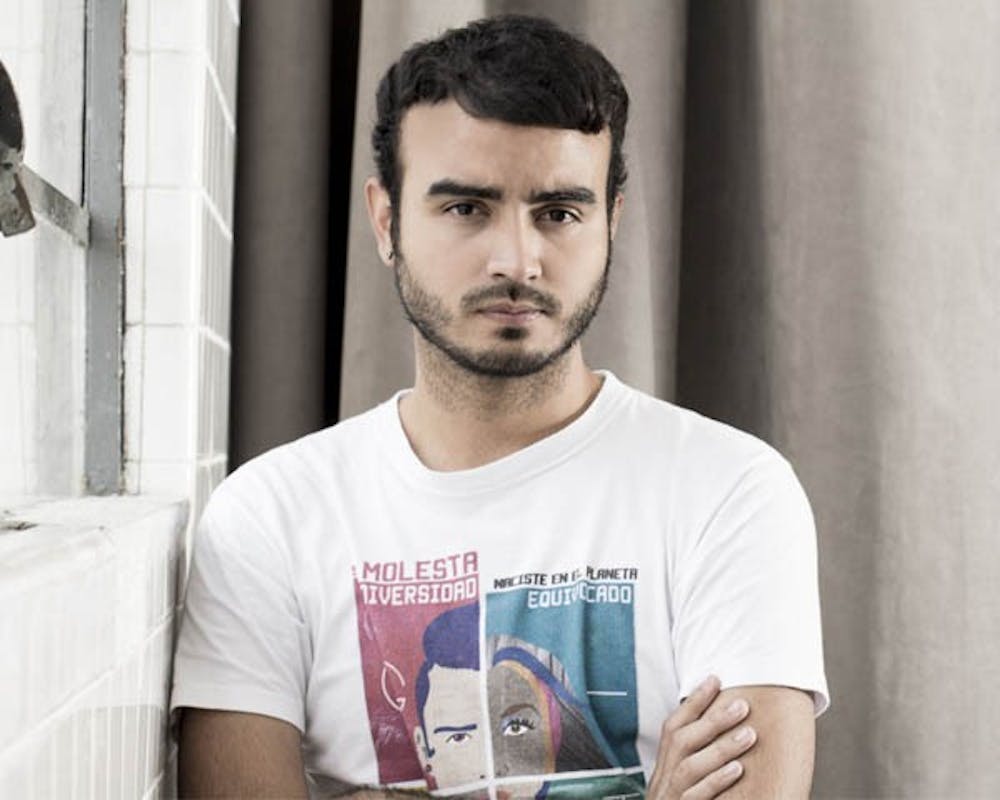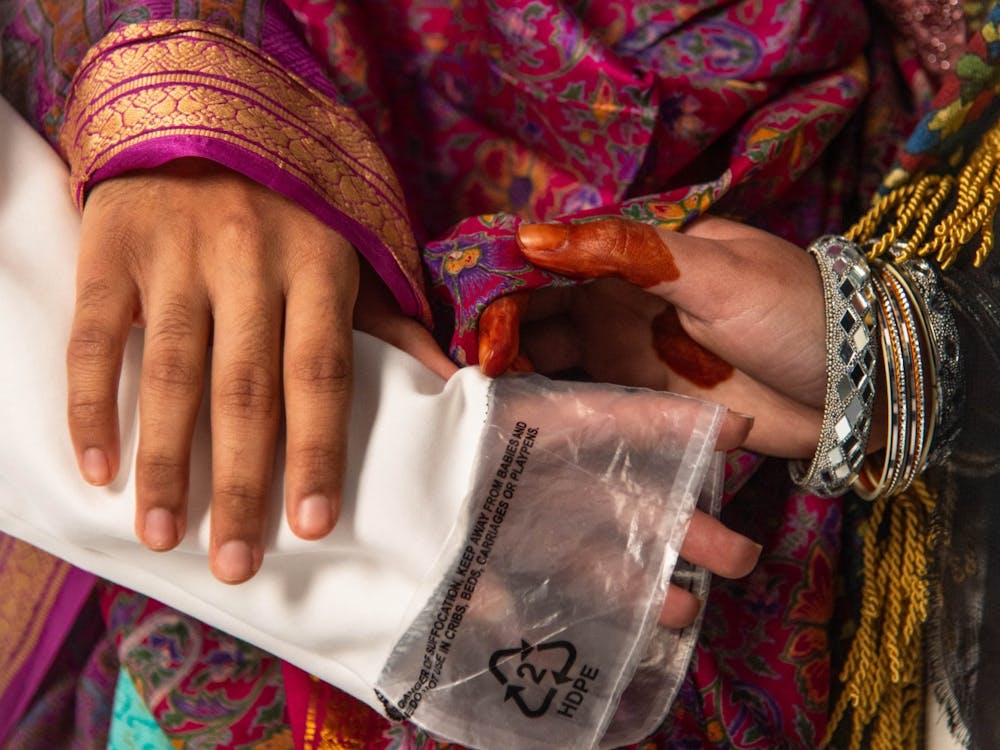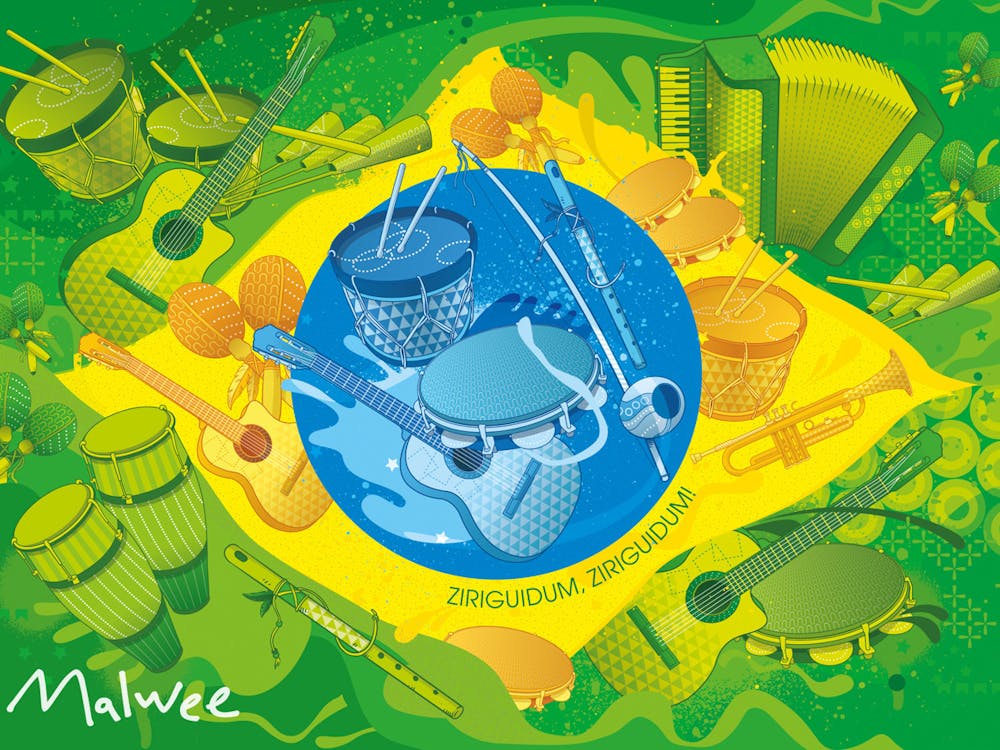“Let me tell you a story.” Onstage, Venezuelan Artivist Daniel Arzola looked out at the crowd gathered in the Glass Pavilion.
On the projector behind him, pictures from his I’m Not Your Joke (No Soy Tu Chiste) project shone out — beautiful, human depictions of people in bright pastel colors labeled with quotes meant to combat homophobia.
One picture, titled I have the right of being as I feel I am, depicts a man’s profile with a beard strikingly made of butterflies.
In fact, in many of his works, the butterfly seems to be a symbol. It intrinsically ties Arzola’s identity to his project.
“We are changing all the time. It’s the most natural thing we can do. [The butterfly] represents fragility and transformation. If you interrupt the process of change you interrupt a beautiful process,” Arzola said.
This mantra was in the back of Arzola’s mind when he created his I’m Not Your Joke project in 2013 while in his home country of Venezuela.
He was motivated to act when he heard the story of Angelo Prado, an 18-year-old boy from his home city, Maracay, who was burned alive for being gay.
Prado’s fate was one that Arzola himself scarcely avoided when he was 15. A group of boys tied him to a pole, tore up all his drawings and planned on dousing him in gasoline to burn him alive. By chance, he escaped his bonds, but many are not so lucky.
Even if they manage to escape, the scars never fade. Few media stations in Venezuela cover hate crimes against the LGBTQ community, and when they do, Arzola says they treat it, “as jokes,” never with any emotion or love.
The goal of Arzola’s “artivism” — a portmanteau of art and activism — is to use art as a nonviolent way of changing people’s mentalities and confronting social issues in a way that appeals to people’s emotions, allowing them to connect to the cause.
“The difference between activism and artivism is that activism needs the person to be there to appeal to your reason. Artivism appeals to your emotions. You don’t need to understand something to feel it,” Arzola said.
Instead of looking for revenge against his assailants, Arzola took up a paintbrush.
“You have to understand that in a moment in your life you’re going to stand in front of violence. And violence has a cycle,” Arzola said.
Arzola felt that he had to escape from the self-perpetuating cycle of violence.
“If you don’t break that cycle, that cycle breaks you,” Arzola said. “In that moment it’s going to be best to fill your hands with colors and not with blood. Because if you fight violence with violence you’re not fighting, you’re letting yourself be beaten.”
Shortly after Arzola’s I’m Not Your Joke project launched, Madonna tweeted about his work after seeing it on a website called ArtForFreedom.com, writing, “this art is no joke i love this @Arzola_d.”
Soon after, Arzola received death threats because of his work and had to leave his family behind and flee Venezuela. Undeterred, Arzola was now free to paint his “inner universe.”
In 2014, Arzola collaborated with the It Gets Better Project, creating illustrations highlighting issues facing LGBTQ youth worldwide.
On May 17, 2017, the International Day Against Homophobia, Transphobia and Biphobia, Arzola revealed a mural he had been working on in Montevideo, Uruguay.
The objective of his work was to respond against the violence and hate from people that attack what they don’t understand.
Additionally, he has been teaching artivism at various universities, including the University of Alberta and Amherst College, and working on a children’s book about families with same-sex parents.
His biggest project of 2017 was illustrating a Pride Month video series for the 2017 Logo Trailblazer Honors Awards, which were narrated by Laverne Cox.
The videos were aimed at celebrating famous queer figures throughout history. His work can also be found in the New York City subway.
His artwork is meant to be a message in a bottle for anyone out in the world struggling in a sea of homophobia and loneliness. A shield against hatred and misunderstanding.
As I looked up at him on the stage, I couldn’t help but be impressed by his determination to spread his message to everyone, overcoming language barriers with the directness of his art.
During the Q&A session at the end of Arzola’s presentation, someone asked how he deals with sadness and the oppressive images and unfair treatment he’s witnessed.
“Emotions are like diseases. You can’t fight them,” Arzola responded. “I think society teaches every person how to be happy all the time. And then when you feel another emotion you feel guilty of what you feel... You have to live it, you can’t fight against that.”
And that’s exactly what Arzola did. He embraced his “darkness” and used his power, his art, to advocate for a new Venezuela and a better world.
He went from lying on a mattress on the floor in Venezuela, listening to gunshots outside his window, to dining with Cyndi Lauper in New York City and advocating for a whole generation.
“It’s a telenovela,” Arzola said. “I have my happy ending.”
















Please note All comments are eligible for publication in The News-Letter.